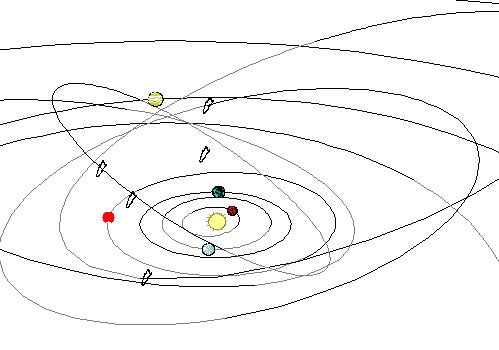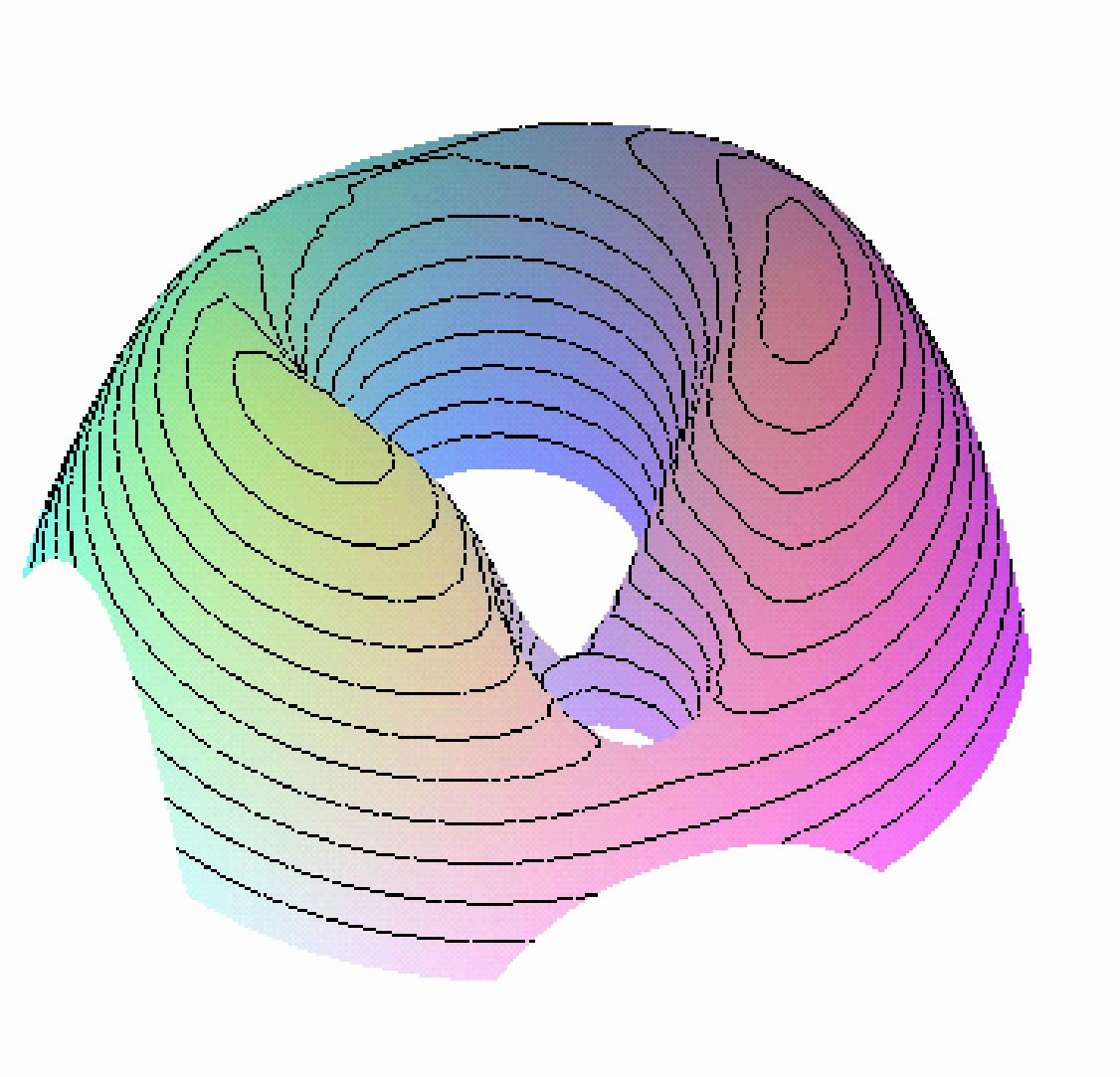This is a well established and important topic in theoretical mechanics. While its roots trace back to Newton, its study extends to the present day as new results continue to emerge. Investigation into the three body problem at the end of the nineteenth century is responsible for launching the modern study of chaos. There are new concerns lending weight to today's investigations and applications: we need to know how to put satellites into orbit, instrument packages need to be sent to Mars, Jupiter, and beyond, and we need to watch the sky for that asteroid "with our name on it!" Projects under this heading can be quite varied. They can emphasize mathematics and physical principle as well as computational sophistication. Both of the projects listed below used Maple at certain points in their development and they both helped us gain greater insight into the analytic and computational side of orbital mechanics.
Bea's project was to explore the approach to the three body problem with special emphasis on examining the stability of motion near the Lagrange points and the form of the orbits perturbed away from the stable points. Of great importance was the use of the co-rotating frame of reference. She used Maple to create graphical renditions of complex three body orbits, and mathematical insight to extract physical understanding from the numerical calculations she performed. Andrew Wiechmann ('02), "The computer and the asteroid: computer controlled pointing, tracking, and data reduction in the study of asteroids ."
Zero velocity curves as a function of the Jacobi constant (increasing downward).
|


